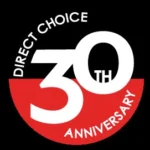It’s not just the title track of the 2021 Holiday Season. This year’s supply chain issue is a heavy dose of reality that has retailers scrambling to meet demand and end the year in the black. As marketers, we’re kind of caught in the middle with more questions than solutions. Our Q &A tackles some the broad questions behind this unprecedented Holiday marketing season.
Why isn’t the supply chain keeping up with demand?
The pandemic is ultimately to blame but there is no simple answer. Three key factors have led us to be unprepared for the uptick in demand.
- Just in time inventory management: Rather than keeping warehouses full, companies have switched to having raw materials and finished products arrive exactly when they need them. It’s a way of running leaner by eliminating excess inventory. Unfortunately, it leaves little room for surprises like a pandemic.
- Lack of warehouse workers and truck drivers: A record 4.3 million Americans quit their jobs in August. According to The Washington Post, far too few people are willing to take on the often-grueling work as evidenced by the record 490,000 job openings in the warehouse and transportation sector this past summer.
- Inadequate infrastructure: Americans are buying so much now that ports, roads, air shipping, etc. can’t keep up.
If I can’t deliver my product or service right now, should I stop advertising?
First of all, brand awareness is always important regardless of the immediate situation. It’s an investment in the future of your business. And customer retention is about the lifetime value of your customers far beyond 2021 and this Holiday season.
When thinking about current/seasonal selling, consider the fact that your competition isn’t going anywhere. You need to grab customers yesterday. Case in point: Klarna reported last month that 40% of consumers are starting to shop early due to media coverage of supply chain issues.
What can I do to avoid disappointing customers?
Be proactive when it comes to product shipping delays and out-of-stock items. The last thing you want is someone ranting on social media about their dissatisfaction with your store and wrecking your reputation. Use email, SMS, social channels and notices on your website to tell current and potential customers when items are expected to be in stock and ready for delivery.
When will it end?
According to Business Insider, estimates range from early next year to 2023. The problem is so multi-faceted and every supply chain so different that it’s difficult to make a broad prediction.
If that didn’t cure your supply chain blues, keep this in mind: All of the shortages are signs of a booming economy which is a thousand times better for business than the alternative.


